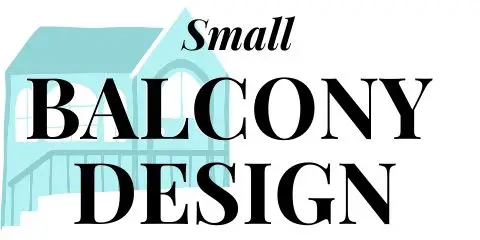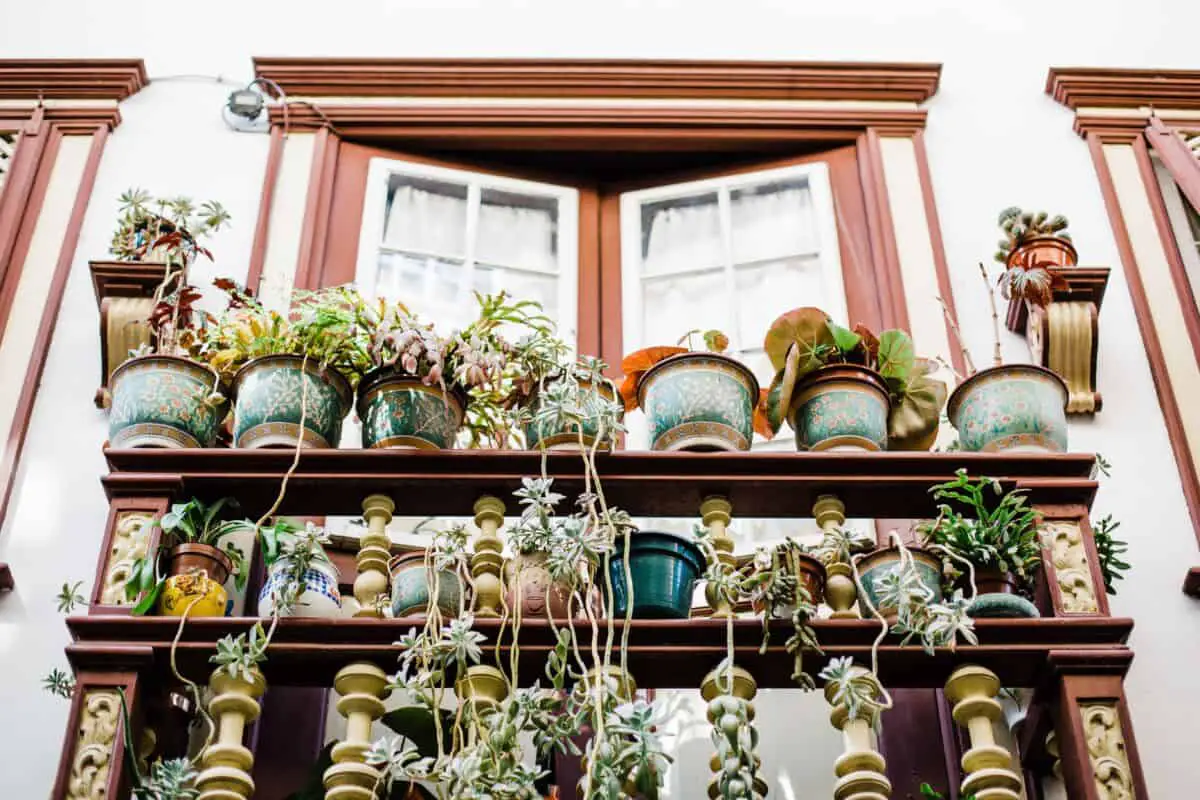Gardening is therapeutic and rewarding as it brings together honest effort with aesthetics and living space design. If your balcony is small, you don’t need to worry because there’s a real art to small balcony gardening.
To start small balcony gardening as a beginner, first, determine the space’s size and get appropriate pots. Then, decide by sunlight availability whether you’d like to plant full sun, partial sun, or shade-friendly plants. Lastly, fertilize and water plants according to their individual needs.
In this article, you will learn how to turn your gardening vision into reality by getting the products needed and building sustainability into your garden’s maintenance. You’ll also learn the best types of plants to grow depending on your balcony. So, keep on reading!
Determine the Area
To get started with small balcony gardening, you need to determine the area’s size where you’ll place your pots.
If you’re going for the vertical option, you should still measure the surface. The only difference initially would be that, for regular gardening, you’ll measure and mark the area on the balcony floor. In contrast, vertical gardening involves doing the same with the balcony walls. Initially, you should start with a regular small balcony garden.
Decide the Pot Sizes and Position
For general gardening, one selects the plants first then gets the pots that facilitate the plant choice. However, since space is the most critical differentiator in small balconies, you’ll begin with pots small enough to facilitate a diversity of plants.
Upon selecting the right-sized pots, you’ll then find the plants that can thrive appropriately within those pots without overcrowding your balcony. Most balcony gardens begin as projects to fill up negative space, but homeowners end up overcorrecting with plants that horde too much space.
As a rule of thumb, no individual pot should exceed 1/5th of the balcony’s smallest width. In other words, five pots should comfortably fit along the shortest length of your balcony. Once you’ve determined the pot size, you should order four pots to take up that space. Leaving room between pots helps each plant thrive without interference.
We recommend the following pots to get started:
- SeeBest 4.7 Inch Pots: These are great succulent pots to get you started with low-maintenance plants. The best part about having pots this size is that you can shift them and gift them if you scrap the balcony garden idea. This makes these pots a low-risk investment. With over 1,500 reviews on Amazon, these stand at a global average rating of 4.7 out of 5 stars.
- Zoutog Clay Pots: These pots are slightly smaller at 4 inches (10.2 cm) and have a clay aesthetic that might compliment your interiors. You can even paint the surface to match with or contrast your existing balcony décor. Either way, these pots—with a 4.2-star average rating—can suit your balcony gardening needs.
- An old drawer: If you’re planting across a wider area with a bushy plant or a shrub, the best planter is none other than an old drawer. By taking one of your drawers and drilling a drainage hole through it, you’ll not only create a planter but will also get ‘handyman points’ for DIYing the thing.
Consider Water and Sunlight
With your pots selected, the next thing you should consider is the availability of sunlight and the practicality of irrigation. Different plants work well with different amounts of sunlight exposure and water. You should ask yourself the following questions:
- Does my balcony receive full sun, partial sun, or low sunlight? Typically, a south-facing balcony gets sun throughout the day. East and west receive sunlight more directly, albeit not all the time.
- How can I practically water my plants as often as possible? Regardless of how much water your plants need, assuming you’ll need to water the plants every few hours when deciding the watering method helps because you’re focusing on practicality. Whether you adopt a drip irrigation system, get soakers, or simply buy self-watering pots, you’ll do just fine as long as you ask the question before making your purchase.
While you can lug jugs of water from the sink initially, you should account for your enthusiasm falling across time. Therefore, you should build sustainability into your garden from the beginning. The following solutions can help you maintain a good watering schedule:
MoistenLand Automatic Drip Irrigation System
This automatic irrigation kit allows you to go hands-free for 30 consecutive days as it controls the water supply to your plants. It is powered by USB so that you can position it away from plugs with a good enough power bank if you don’t like the battery option. The best part about this system is that it brings the benefits of drip irrigation to smaller indoor and balcony plants.
However, it will be tricky to keep the system in the shade and out of direct sunlight (as most electronics should be kept) while keeping the plants exposed to the sun. One way to go about this is to create a shade specifically for this system’s controller.
This isn’t the cheapest system to get, but it can serve multiple pots and planters at once. With over 1,400 reviews and ratings, the product currently stands at a global average rating of 4.1 out of 5 stars.
Kollea Automatic Watering System
This is a lower drip control system with a 60-day schedule. Unless you’re watering succulents (which might be adversely impacted by a heavier drip), you can use this low-cost alternative to MoistenLand’s system.
Essentially boasting the same functionality with an extended schedule, this product only has 30 ratings putting it at an average of 4.2 out of 5 stars. We recommend getting this for plants that aren’t too sensitive to water.
E-KAY Bird-Shaped Self Watering Globes
Finally, the most cost-effective solution to water plants, in general, is a watering globe. Using design mechanics, these globes retain most of the water and slowly release it into the soil where they’re installed. These globes have aesthetic appeal because of their beautiful design, but any watering globe works for small garden irrigation.
Find the Plants Through Compatibility-Based Elimination
With your watering system covered and other factors noted, you can begin selecting the plants you want in your balcony garden. Start by making a list of plants you would like to have. This list should be at least three times bigger than your capacity.
If you have three pots, make a list of twelve plants, as most plants will get eliminated because they’ll not be compatible with your balcony. Once you have the list, run each plant through the following checklist:
- Does the plant require the kind of sun my balcony receives? (Full sun, partial sun, and low sunlight)
- Can my irrigation system handle this plant’s water needs?
- Does the plant grow within its healthy parameters? (It doesn’t exceed two times the width of its pot in one year.)
If the answer to all of the above questions is ‘yes’ for any plant, you can have it in your small balcony garden. Once you have determined the plants, you then get the appropriate soil. Here are some of the plants to consider based on sunlight conditions:
- Full sun: If your balcony receives prolonged direct sunlight exposure, consider the following plants: Shasta, yarrow, coreopsis, Russian sage, butterfly weed, and daylily.
- Partial sun: If your balcony receives sun some of the days with partial shade for the rest, consider planting Golden Columbine, Soapwort, Bluebells, Western Wood Lily, and Coral Bells.
- Low sun: Any indoor plants that can survive in low lights are appropriate for a balcony that gets barely any sun. Consider the following options: Impatiens, Dogwood, Lady Ferns, Chaenomeles, Hydrangeas, and Foamflower.
Final Thoughts
Whether you’re hanging planters from sills, placing vertical planters across your balcony wall, or using a variety of small pots on your balcony’s floor, you should take care of space, irrigation requirements, and sunlight compatibility. Ultimately, a great garden isn’t the perfect garden but the one you can sustain over a long period.

